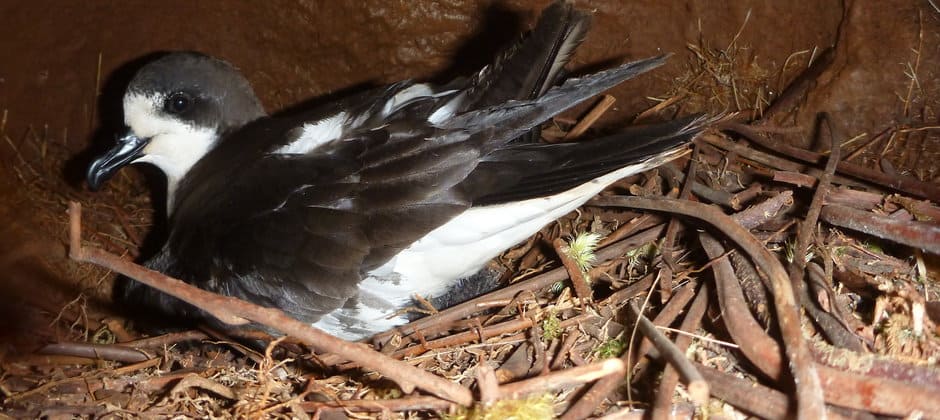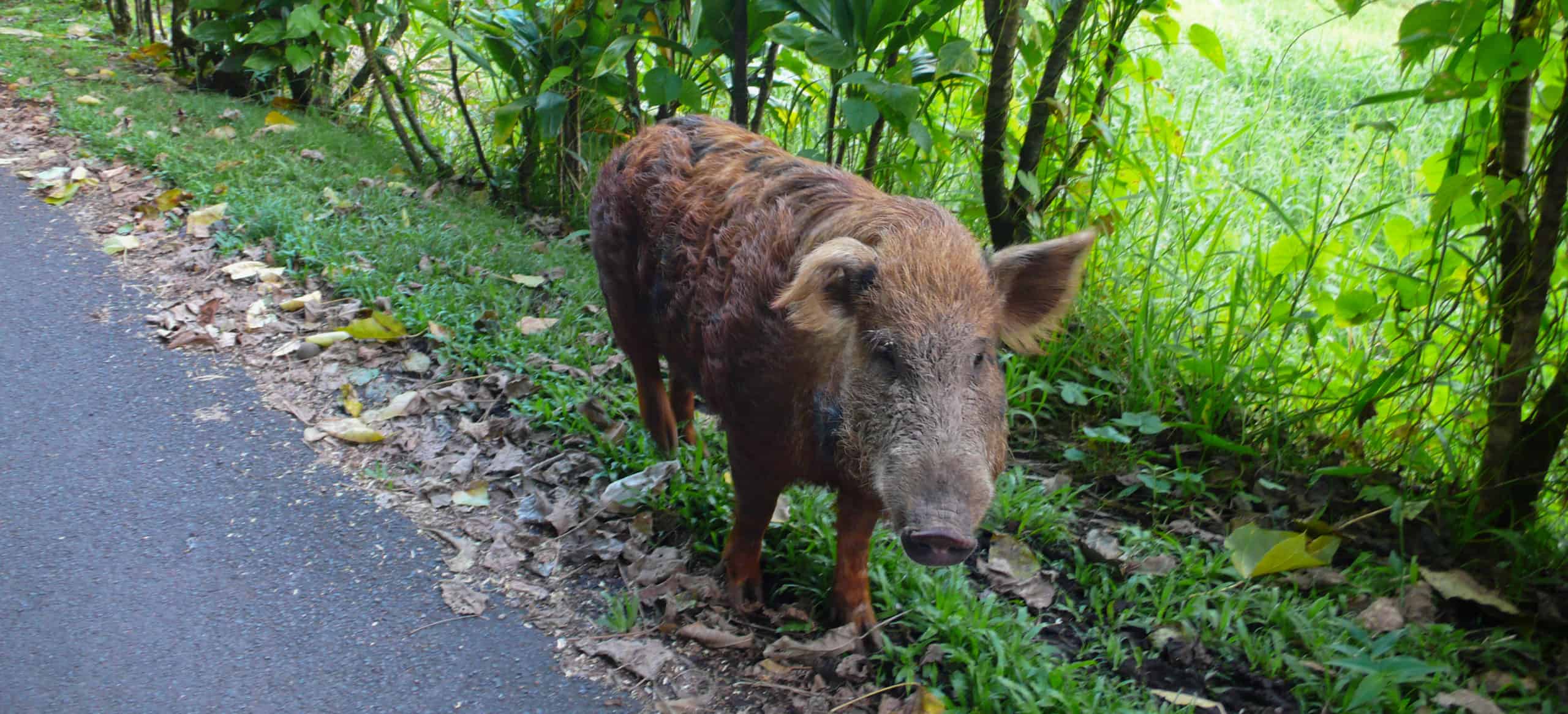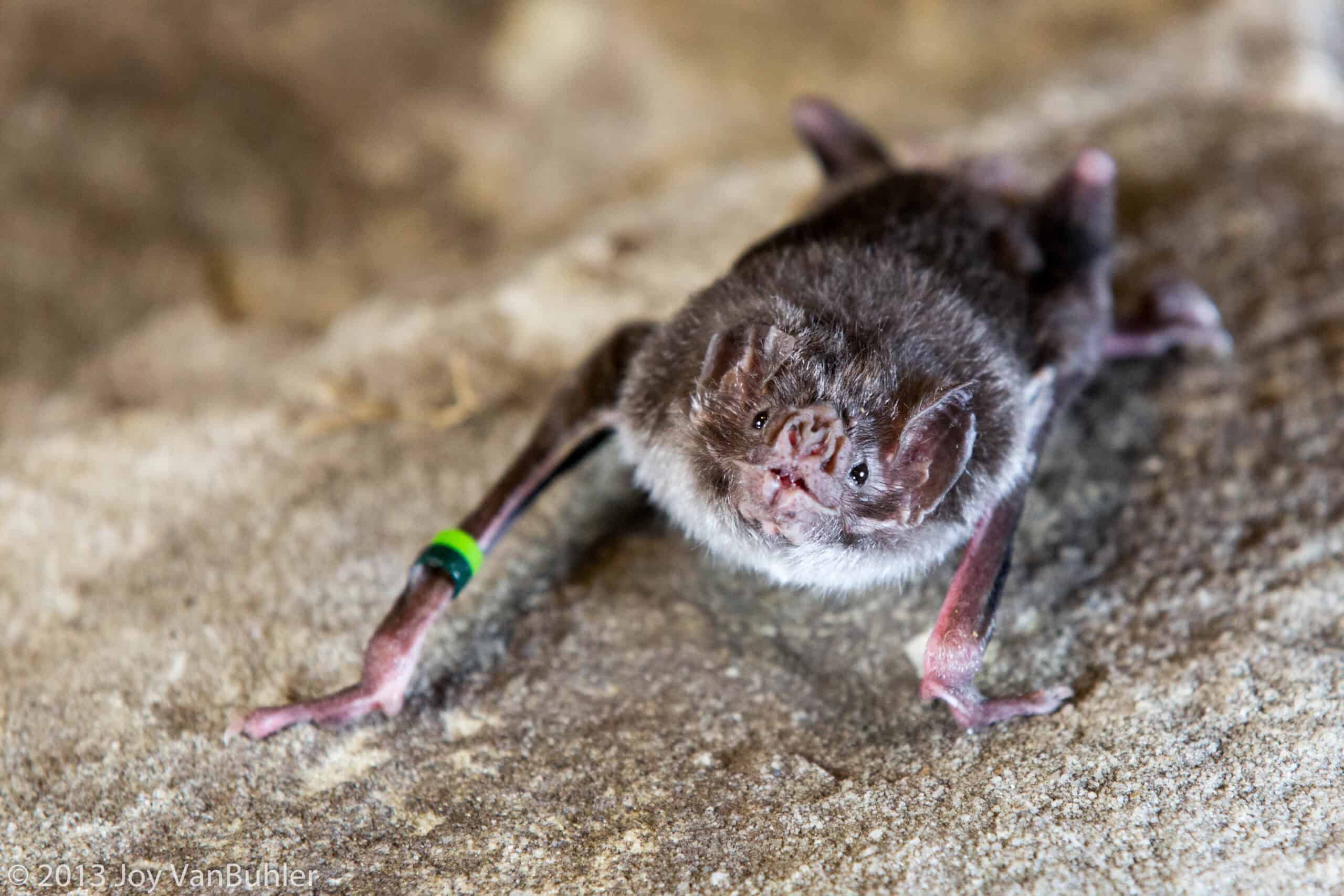Share this article
Wild Cam: Predator control critical for Hawaiian seabirds
Even in Kauai’s remote mountainous regions, endangered seabirds aren’t immune from the threats of introduced predators, but research shows that predator control can benefit the birds.
“There’s this perception that they’re OK up there because they’re far from people,” said André Raine, Kaua’i Endangered Seabird Recovery Project coordinator and the lead author of a study published recently in the Journal of Wildlife Management. “But we found that no matter how remote they are, they’re still encountering cats, rats and pigs.”
Those invasive species “are the number one cause for extinction and extirpation within the breeding colonies,” Raine said.
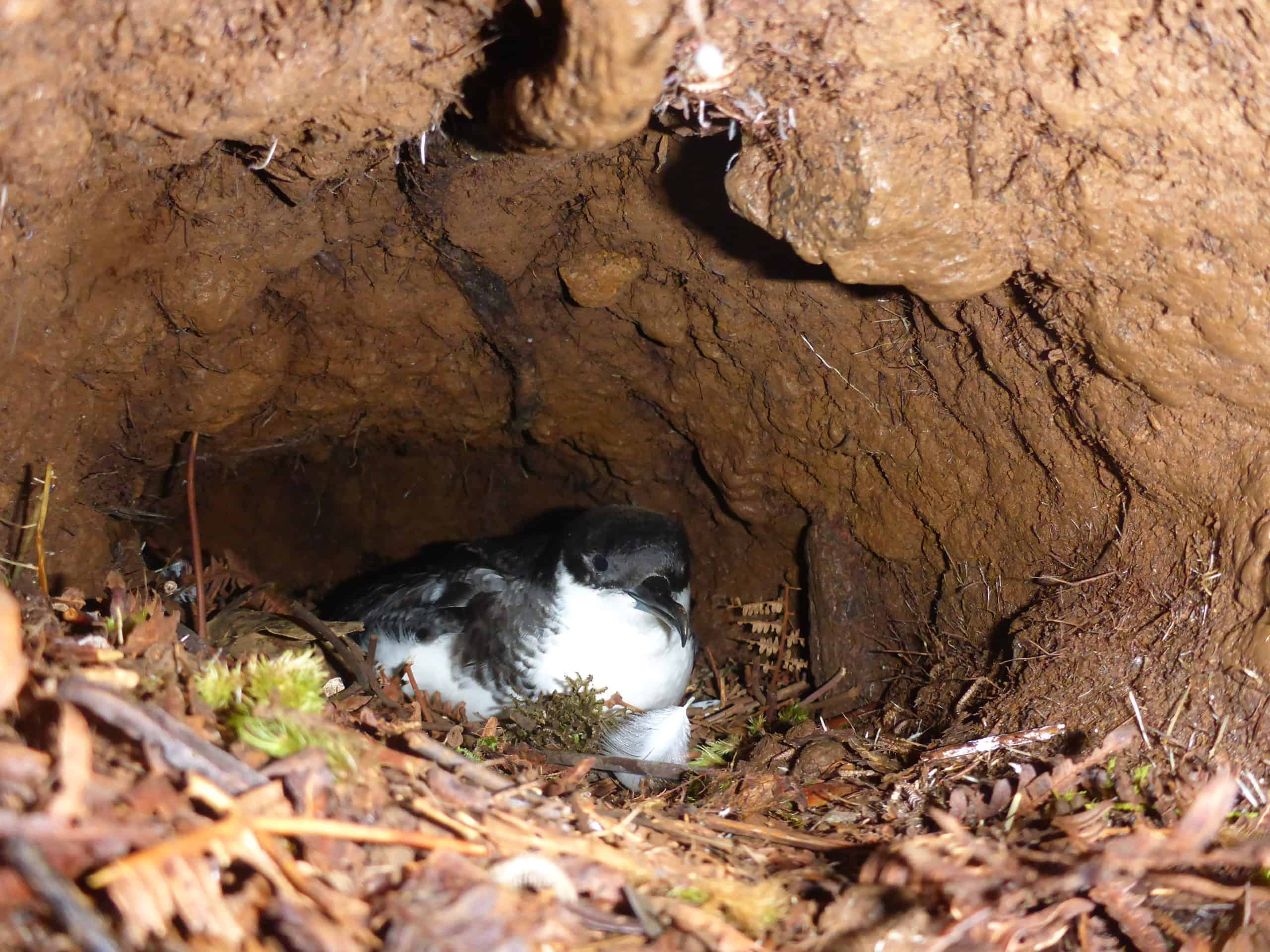
©André Raine
Newell’s shearwaters (Puffinus newelli), Hawaiian petrels (Pterodroma sandwichensis) and band-rumped storm petrels (Oceanodroma castro) lay their eggs in burrows high up in the mountains of Kauai, as well as scattered colonies elsewhere in Hawaii. All three species are federally listed as endangered. The Newell’s shearwater was even thought to be extinct for a period in the early 20th century before a colony was rediscovered on Kauai; the island is now thought to hold 90% of the global population of this species. The number one threat to these species is power line collisions, and a team is working on this issue, but invasive species come in at a close second.
Wanting to determine some of the main challenges to conserving these seabirds, Raine and his co-authors set out to find what was leading to nest failure.
The researchers put about 200 camera traps at up to 30 burrows in each of seven monitored and managed colonies of shearwaters and Hawaiian petrels. They captured hundreds of thousands of images of nest activity from 2011 to 2017, including nest attacks by predators. They also recorded carcasses discovered outside burrows and deduced what had killed them based on the state of the remains. Overall, they recorded 309 predations (many of which were recorded on the cameras), which the researchers set out to classify according to the species responsible.
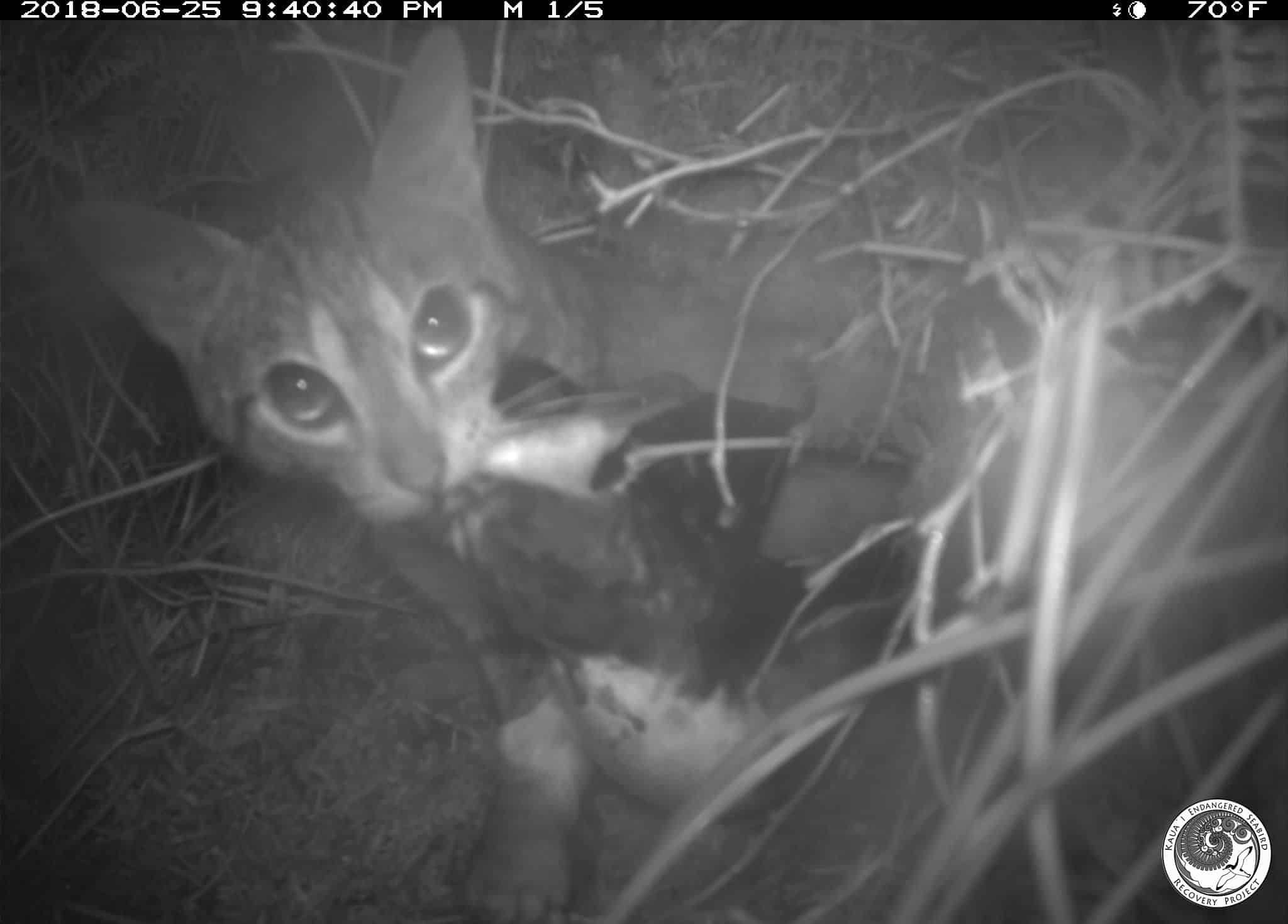
©Kaua‘i Endangered Seabird Recovery Project
They found that domestic cats (Felis catus) were very destructive of the seabirds’ predators, responsible for 35.6% of nest attacks, such as on this Newell’s shearwater nest. Cats are particularly damaging, Raine said, because they prey on breeding adult birds as well as chicks and eggs. “The impact on the population is much heavier when you kill a breeding adult,” Raine said.
Feral swine (Sus scrofa) were responsible for 10% of nest attacks, and because they dig up large areas around the burrows, they were highly destructive.
“It’s like a hand grenade thrown down the burrow and blown up,” Raine said. “They just kill everything inside.”
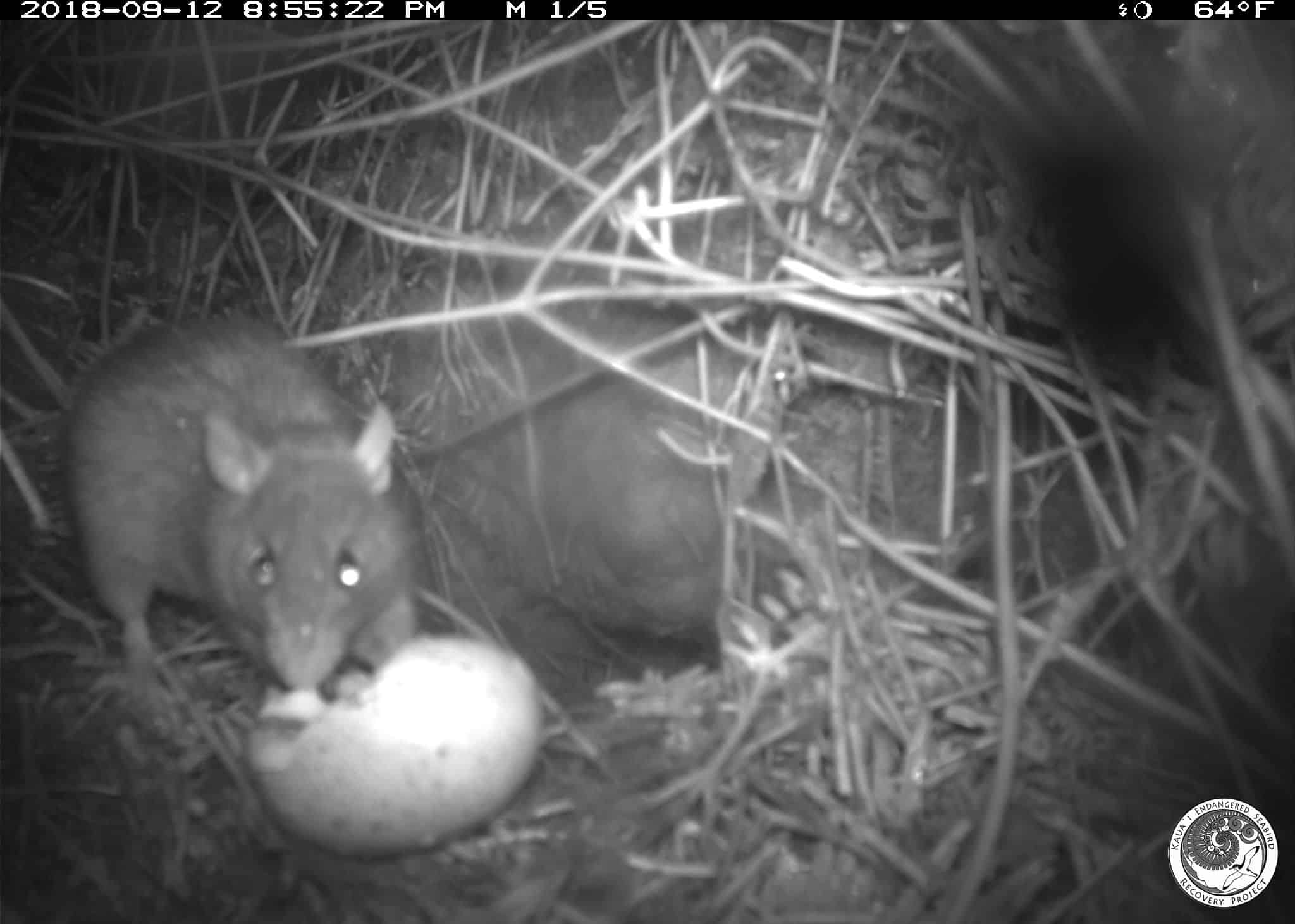
©Kaua‘i Endangered Seabird Recovery Project
Black rats (Rattus rattus) targeted both chicks and eggs, contributing to 50.2% of total attacks.
Barn owls (Tyto alba) were initially brought into Kauai in the early 1960s by the Hawaiian Department of Agriculture to kill the invasive rats, but they too have become a danger to seabirds. Researchers found that barn owls contributed to almost 4% of predations, often at night. Raine said that the owls would even engage in aerial combat to bring down adult seabirds.
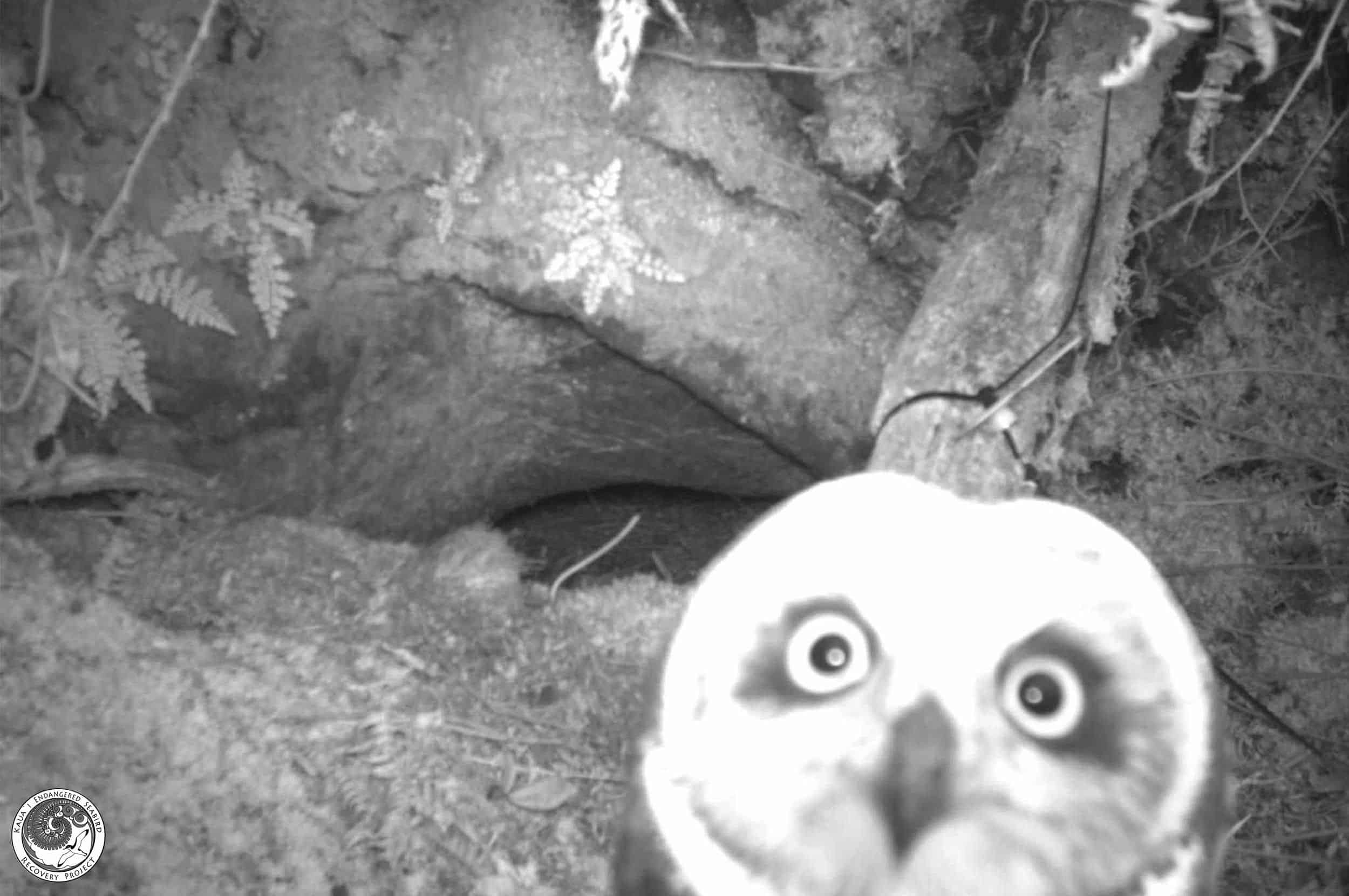
©Kaua‘i Endangered Seabird Recovery Project
Native predators like the Hawaiian short-eared owl, or pueo may be responsible for some predation. But Raine said researchers have yet to record any instances of them preying on seabird nests, though this one was caught lurking around a burrow. The pueos’ main prey are much smaller forest birds and rodents.
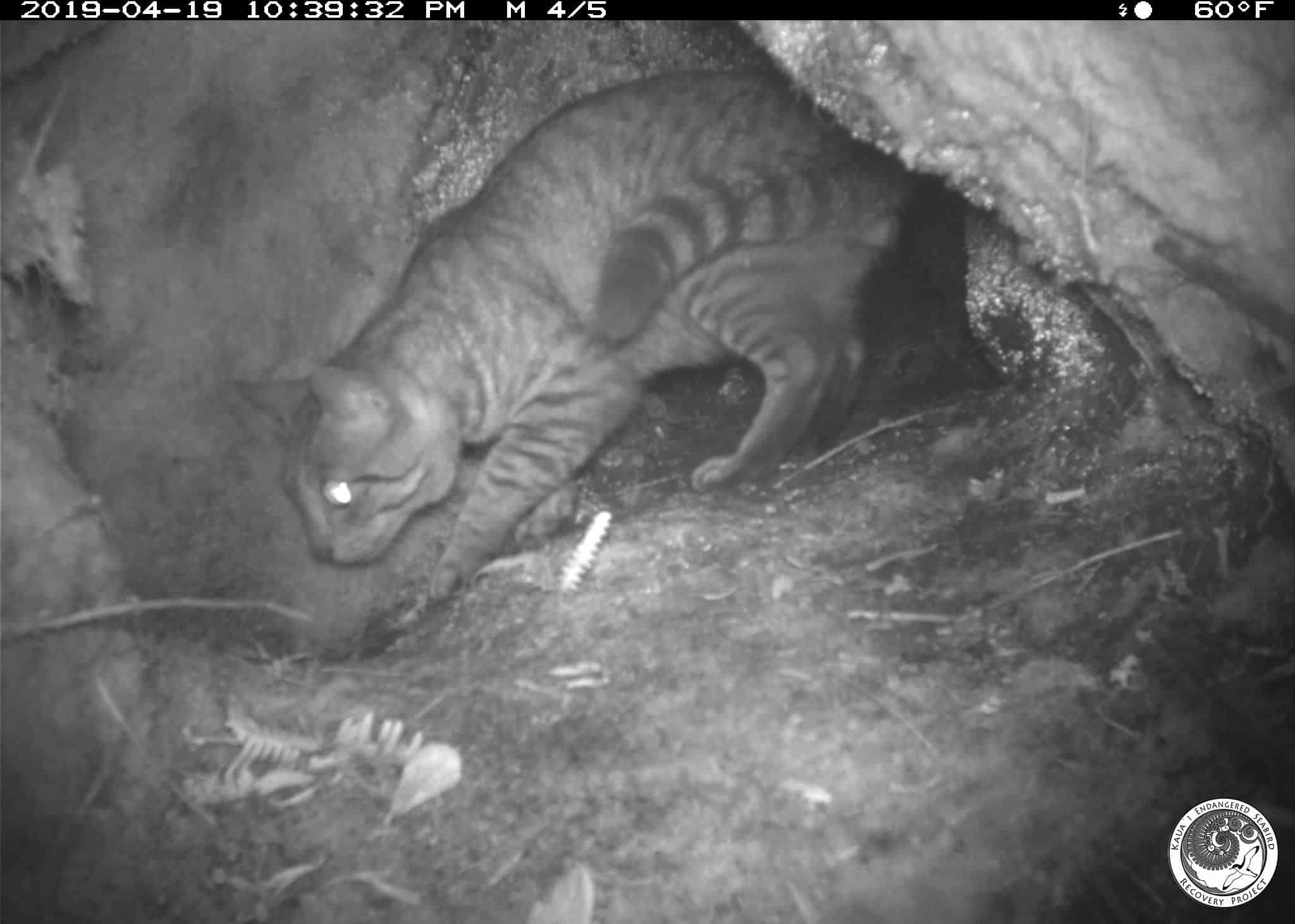
©Kaua‘i Endangered Seabird Recovery Project
The good news, Raine said, is that during the study period, nest attacks began to drop due to invasive predator eradication efforts during the project.
“Depredation went down dramatically over the course of the study,” he said.
“It is pretty gratifying,” said Raine, whose first sighting of a Hawaiian petrel was of one pulled out its burrow after being killed by a rat. “Introduced predators are a serious issue for our birds, but they are also something that can be dealt with, with enough resources,” he said.
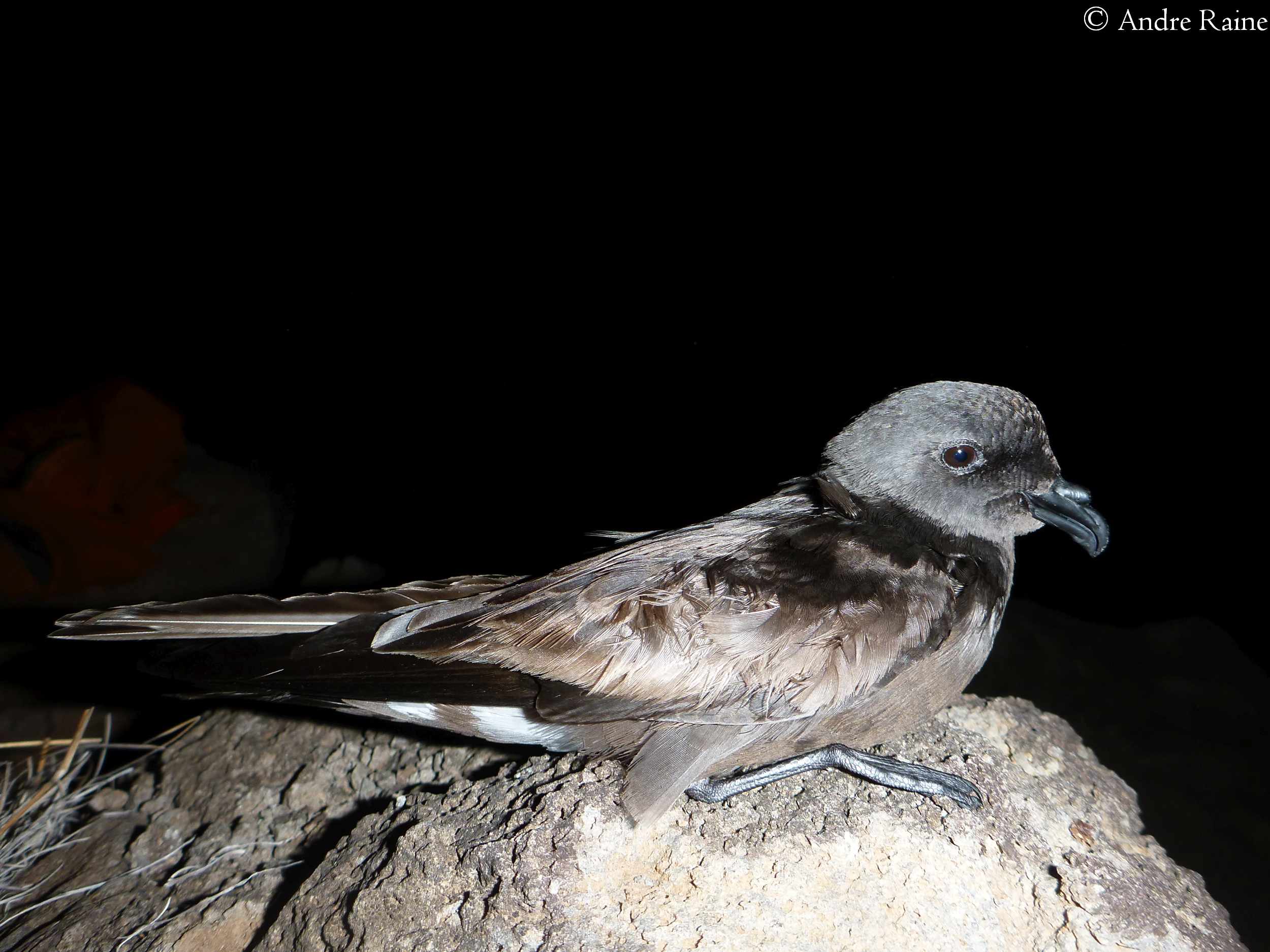
©André Raine
Band-rumped storm petrels are more cryptic than the other two species, and less is known about them. Their nests are located high up on cliff sides and are difficult to access. But Raine said that predator control and other measures taken to improve nest success of Newell’s shearwaters and Hawaiian storm petrels will likely benefit storm petrels as well.
Wildlife managers on Kauai have the resources to deal with such predators, too. Ungulate-proof fences keep out feral pigs while snares can capture those pigs in the fenced area. Automatic traps work for black rats, while a number of different techniques can reduce cat populations. But the latter are difficult to control because new felines are constantly recruited to the area.
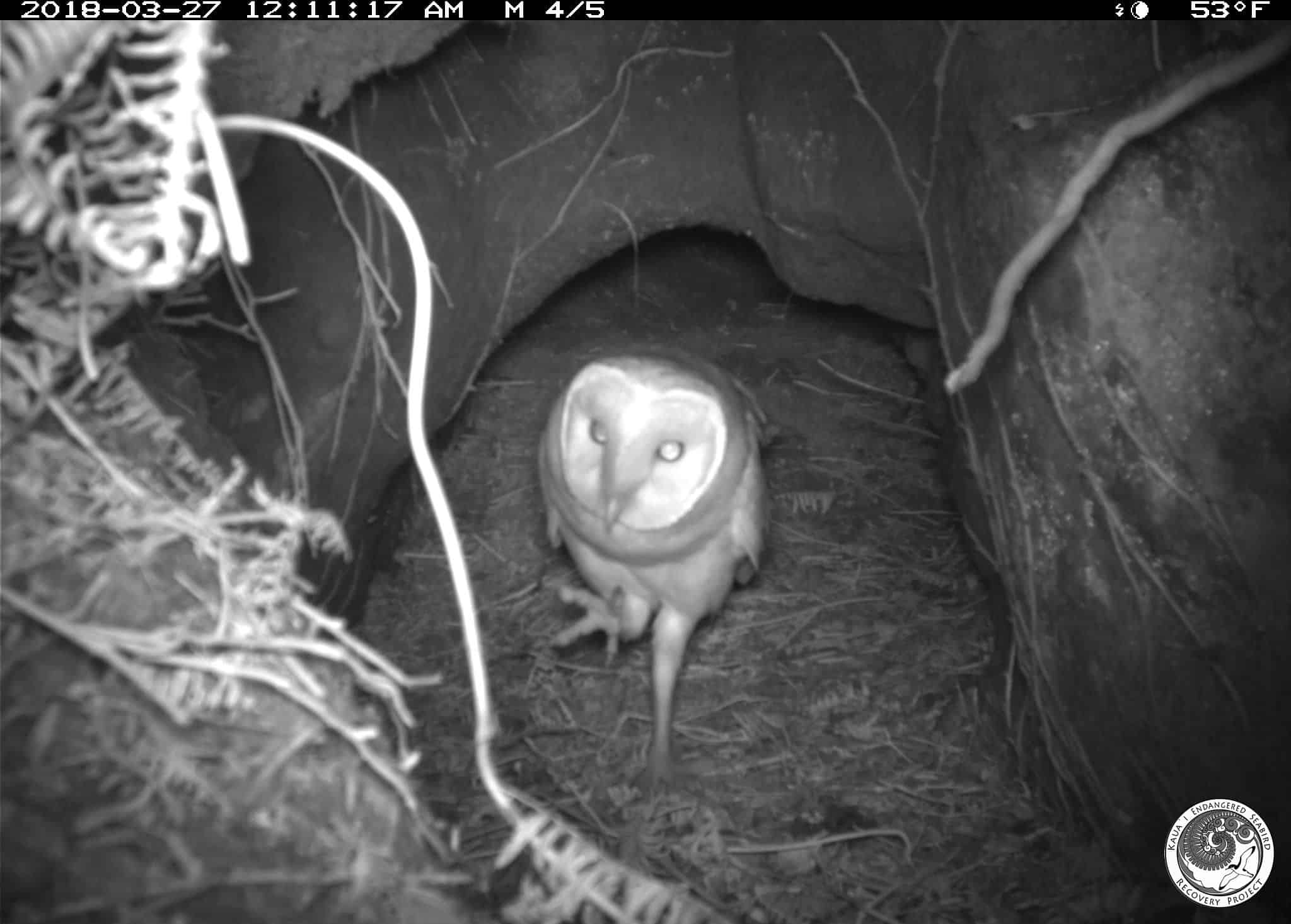
©Kauai Endangered Seabird Recovery Project
As invasive control began to work, Raine said, barn owls started to represent a larger portion of nest attacks. Since fences won’t keep them out of seabird burrow areas, Raine said, that hunting seems to be the most effective approach.
This photo essay is part of an occasional series from The Wildlife Society featuring photos and video images of wildlife taken with camera traps and other equipment. Check out other entries in the series here. If you’re working on an interesting camera trap research project or one that has a series of good photos you’d like to share, email Joshua at jlearn@wildlife.org.
This article features research that was published in a TWS peer-reviewed journal. Individual online access to all TWS journal articles is a benefit of membership. Join TWS now to read the latest in wildlife research.
Header Image: Hawaii, seabirds, Hawaiian seabirds, invasive species, ©André Raine



